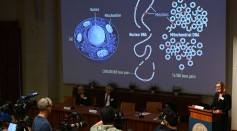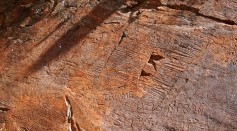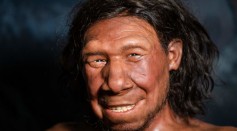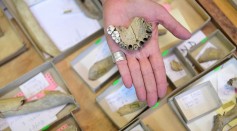modern humans
Modern Humans Have One Key Advantage Over Neanderthals That Let Them Thrive and Drives the Latter’s Extinction

Neanderthal and Denisovan DNA Influence Early Riser Traits in Modern Humans, Study Reveals

Neanderthal Genome Carries Traces of Long-Forgotten Human Ancestor, Study Reveals
45,000-Year-Old Woman's Facial Approximation Reveals Ancient Human-Neanderthal Features
Occipital Bone Bump: What Does It Say About the Early Human Species and the Musculoskeletal Health of Modern Man?

Europe's Oldest Known Engravings Found in French Cave Could Have Been Made by Neanderthals; Carvings Were Sealed Inside Cave For At Least 57,000 Years

Neural Stem Cells Spend More Time to Divide in Brain Chromosomes in Modern Humans Than in Neanderthals

Neanderthal Teeth May Have Grown Faster, Earlier Than Modern Humans as Evident in a 120,000-Year Old Milk Tooth
Neanderthal, Denisovan Blood Group Analyses: Study Confirms Hypotheses on Their Origin, Dispersal, and Interbreeding with Homo Sapiens
51,000-Year-Old Bone Carving Discovered in Northern Germany: Evidence of Neanderthals' ‘Sophisticated Behavior’
New Method Reveals Genetic Differences Between Modern and Archaic Humans
Neanderthals Went Extinct Because They Lack This Important Skill That Homo Sapiens Have
3-Milion-Year-Old ‘Little Foot’: How Is It Different from Modern Humans?
Origins of Hobbit Species Could Be Traced Back To Denisovans and Neanderthals
Most Popular

How Technology Is Changing the Real Estate Industry?

Study Reveals High Turnover in Scientific Research Careers: What This Means for Future Scientists

How a Plant-Based Diet Can Protect Against Breast Cancer: Insights from Nutrition Research

Practical Steps to Future-Proof Your Money to Create Financial Security





